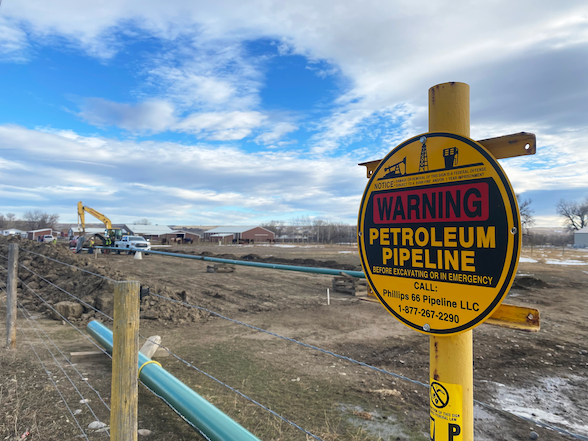By Anne Hedges

News is scarce regarding how NorthWestern Energy intends to proceed with its proposed methane-fired electricity-generating plant on the northern bank of the Yellowstone River near Laurel, MT. NorthWestern recently renamed the facility the “Yellowstone County Generating Station,” but the name change doesn’t change the facts. NorthWestern still needs the City of Laurel to rezone the property to heavy industrial, and yet it has not reapplied to the city after withdrawing its rezoning application late last year. Currently, most of the focus is on the pipeline that will carry the gas from Wyoming to Laurel, the location and construction of which raise a number of serious concerns:
1. The proposed pipeline will need to be placed under the Yellowstone River in order to reach the proposed plant site on the northern bank. The placement of the pipeline drill site on the southern bank creates serious safety concerns, according to an expert geomorphologist. The borehole (the entry point from which the pipeline will be drilled under the river) is in the floodplain and is only 175 feet from the southern bank of the river. Over time, the bank, borehole location, and adjacent land is likely to be eroded by the river. NorthWestern intends to use horizontal directional drilling at that location to put the pipeline deep enough below the river bed. The pipeline will travel 2,029 feet under the river to reach the northern side.
A bridge just upstream of the proposed site creates a narrow, fast-moving channel. After the water gushes under the bridge, it is prevented from moving to the north by riprap and other armor that has been added to that bank to prevent erosion. Thus, the southern bank already suffers from serious erosion, endangering a nearby residential neighborhood. The river has migrated south over 1,000 feet in the last few decades.
2. NorthWestern has further harmed the integrity of the floodplain on the southern side of the river by cutting down dozens of old cottonwoods and other mature trees. These trees had helped stabilize the southern bank for generations. In addition to removing much of the floodplain’s natural armor, NorthWestern’s pipeline may interfere with a drainway channel that brings flood water back to the Yellowstone River during high water events.
3. Placing the borehole for the pipeline at a depth of only 4 feet creates serious safety concerns. Future highwater or flooding in the area could damage the pipeline and cause an explosion or release fuel into the river. This location is near the area where an Exxon pipeline was exposed and ruptured after a flood event in 2011, damaging water quality and property downstream.
NorthWestern must receive a floodplain permit from Yellowstone County to complete this work. It originally proposed placing the pipeline under Riverside Park in Laurel. Instead of rubber-stamping NorthWestern’s proposed easement under the public park, the Laurel City Council and the public asked many questions regarding safety. Rather than addressing the City’s and community’s concerns, NorthWestern pulled the plug on that public process and moved the pipeline next to a residential neighborhood in the floodplain, a location that did not require an easement from the City. It does, however, require a County Floodplain permit. The County initially approved the permit but was forced to withdraw its approval after neighboring landowners filed a legal appeal of the decision on the grounds that they had not been notified of the change in location as the law requires. In late January 2022, NorthWestern was forced to resubmit its application, after notifying the neighbors.
The day after the close of the public comment period, the County Floodplain Administrator approved the permit without addressing some of the most serious concerns raised by an independent expert geomorphologist or the neighbors. Consequently, the neighbors appealed the decision to the Yellowstone County Commission, which will hold a public hearing on the appeal on March 29.
Finally, though all these concerns are troubling enough, they become even more disturbing when considered in tandem with the conclusion of a January 2022 report from a pipeline expert. He found that the actual pipeline design is dangerous. NorthWestern intended to place an 8-inch pipeline in a 12-inch casing. The expert found that this design increases the “likelihood of rapid and unpredictable corrosion attached to the 8-inch pipe causing its failure, even rupture.” The expert concluded that this design is “the most dangerous of safety approaches.” NorthWestern now says that it will remove the casing after the pipeline is placed; the County must make this a mandatory requirement to protect nearby and downstream property owners.
This article was published in the March 2022 issue of Down To Earth.

